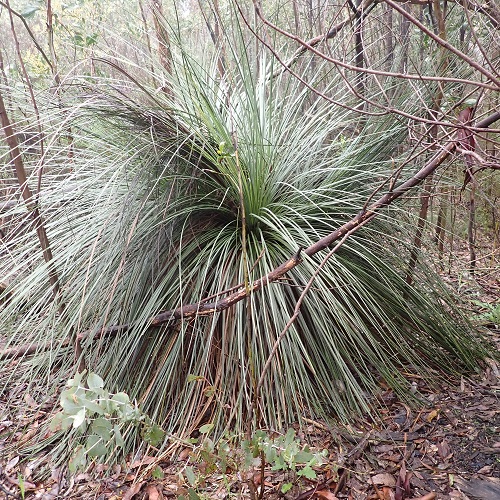22 August 2023

Australia’s iconic grass trees – aka yaccas – are hardy, drought-tolerant, and strikingly beautiful. Now, new research has revealed another, far more important, feature: their ability to protect wildlife from deadly weather extremes.
A study undertaken by the University of South Australia and Kangaroo Island Research Station shows that the yaccas’ long, thick and dry grassy skirts help insulate animals from lethal temperatures in summer and winter, as well as keeping them dry.
Temperatures under the grass-tree canopies at four sites in the Mt Lofty Ranges were up to 20 degrees cooler than under the direct sun in summer. In winter, conditions were significantly warmer under the grass skirts at night.
It turns out the iconic plant species – Xanthorrhoea semiplana sub species semiplana – also doubles as an effective umbrella, keeping the soil completely dry under 80% of the bigger, older yaccas during weeks of heavy rain.
Lead researcher Dr Topa Petit says it’s not surprising that many creatures seek shelter under yaccas, particularly the older species with the largest and thickest skirts.
“Several of the 29 species of Australian grass-trees are known to host native bush rats, threatened bandicoots, echidnas and pygmy-possums, among other wildlife,” Dr Petit says.
“Temperatures over 40 degrees can be lethal to some of our wildlife, but grass-trees provide extremely stable temperatures with very little variation.
“The remarkable ability of these grass-trees to protect wildlife from deadly climatic extremes – as well as providing effective hiding spots from predators – strengthens the mounting evidence that these plants are keystone species.”
However, the yaccas on the mainland and Kangaroo Island are facing multiple threats which could have dramatic consequences for wildlife, Dr Petit says.
The soil pathogen Phytophthora cinnamomi is having a devastating impact on the grass-trees, causing widespread dieback. Fuel reduction programs, summer fires and land clearing are threatening their survival even further.
“Grass-tree resilience to bushfires appears to be overestimated,” Dr Petit says.
“Moreover, even if grass-trees are not killed by fires, their very old thick skirts of dead leaves burn, leaving no shelter to animals in post-bushfire environments.”
In 2022, the Federal Government added fire regimes that cause declines in biodiversity to the list of Key Threatening Processes.
“Historically, grass-trees were cleared for agriculture. They are now cleared or burnt in so-called fuel reduction programs. Extensive research has shown that this practice increases fuel loads and dries out the landscape.”
Dr Petit says yaccas scorched by fire can take decades to regain their role as effective shelters and are more susceptible to Phytophthora infestations.
“It’s important that habitat management be backed by sound research and scientific monitoring rather than hysteria. We owe it to the future of our ecosystems.”
The research is published in Pacific Conservation Biology.
…………………………………………………………………………………………………………………………
Contact for interview: Dr Topa Petit E: sophie.petit@unisa.edu.au
Media contact: Candy Gibson M: 0434 605 142 E: candy.gibson@unisa.edu.au


